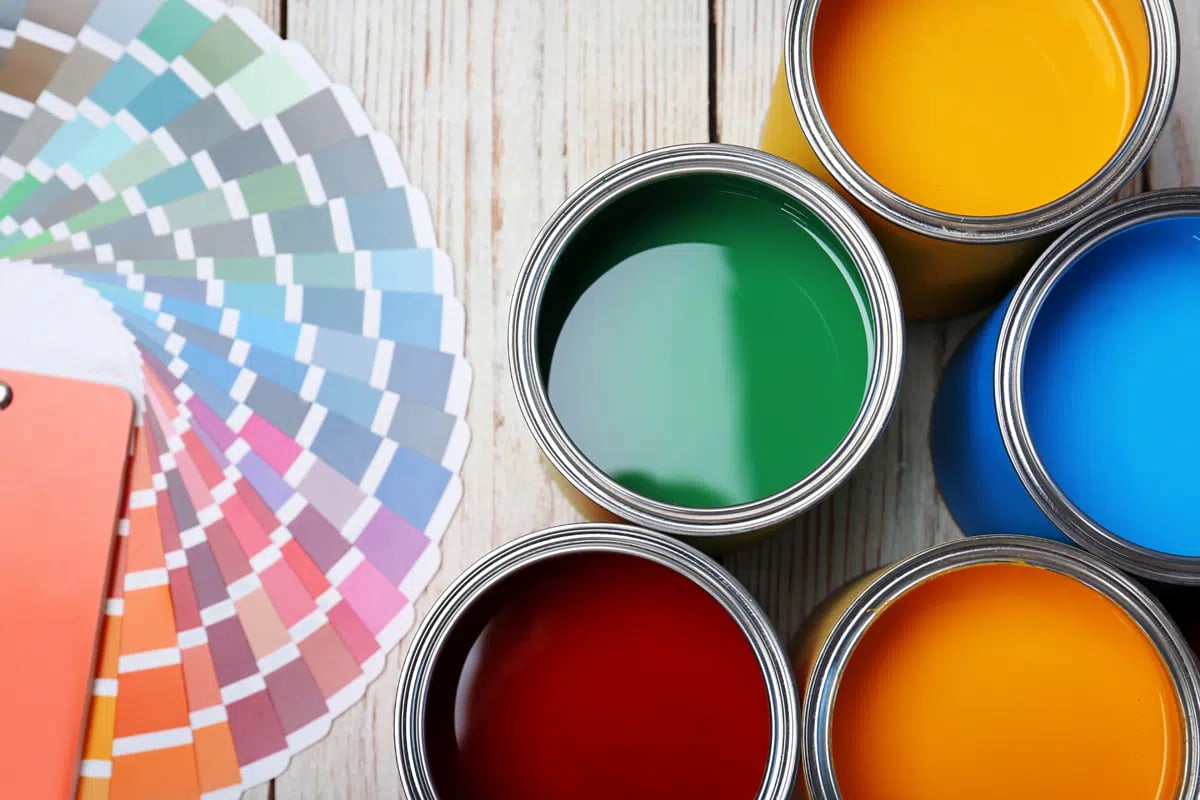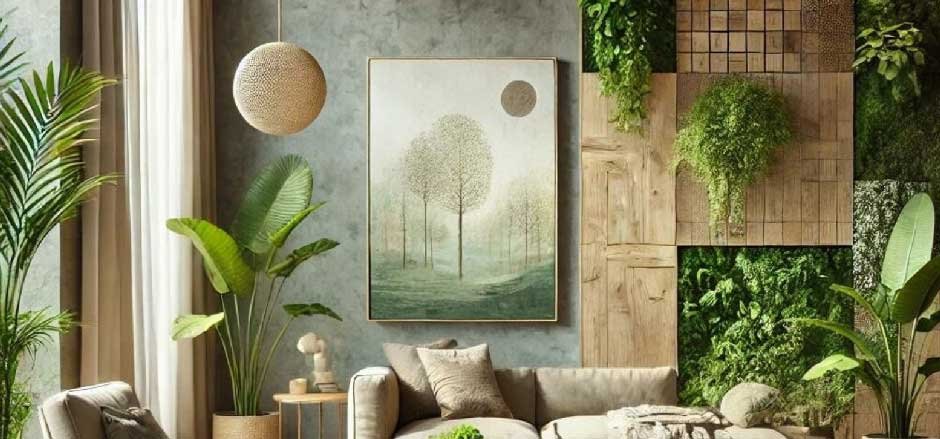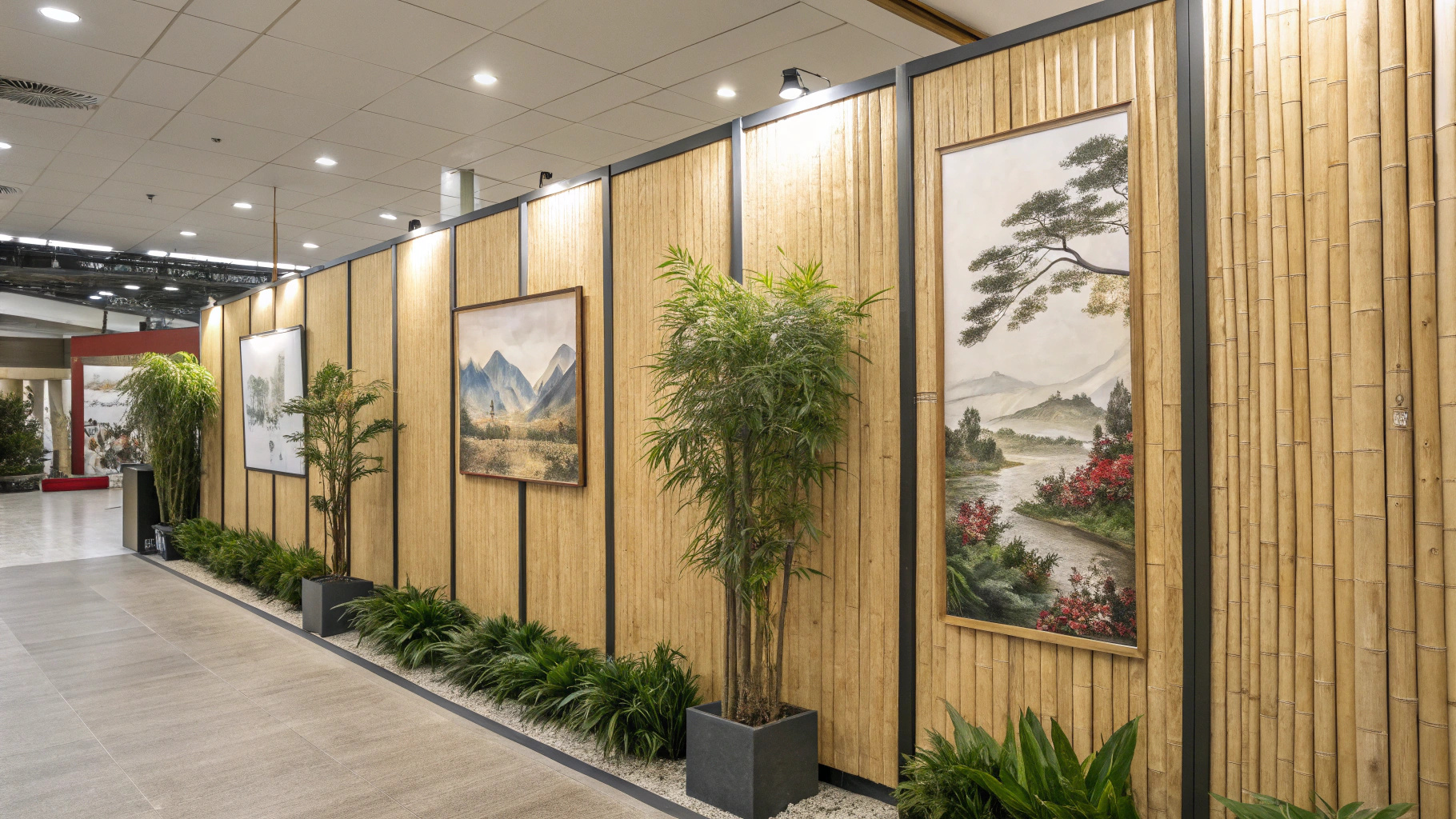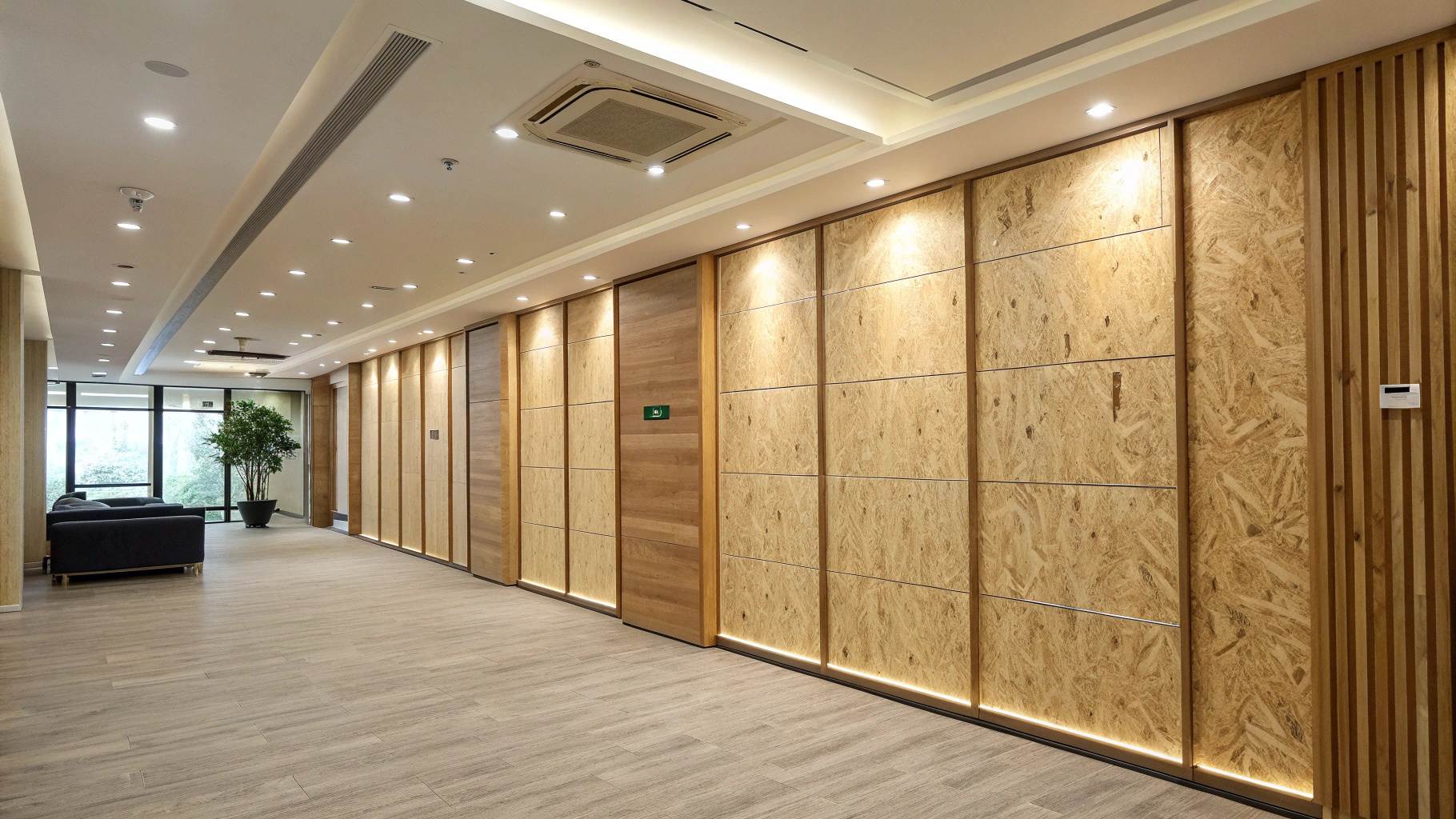Skip to the good bit
ToggleCreating a healthy, eco-friendly environment starts with the walls around you. Whether you’re refreshing your home or redesigning your office, choosing sustainable materials can improve air quality, reduce waste, and bring a sense of natural harmony to your space. Below, we explore eight environmentally conscious wall finishes that combine aesthetic appeal with responsible design — proving that sustainability can be as stylish as it is practical.
1. Recycled Wallpaper
Recycled-content wallpaper has evolved far beyond the dated rolls of the past. Made from reclaimed paper, repurposed textiles, or even post-consumer plastics, it gives waste materials a beautiful second life. These wallpapers are typically printed with water-based inks and bonded using non-toxic adhesives, making them safe for both you and the planet.
Eco wallpapers can now mimic natural textures — from linen weaves to bamboo fiber looks — offering endless design flexibility. Peel-and-stick or magnetic versions are perfect for renters, allowing easy removal and reuse without damaging walls. You can create dynamic, tactile surfaces while staying true to your sustainability values.
2. Natural Paint
Unlike standard paints full of harmful chemicals, natural paints are crafted from plant oils, mineral pigments, clay, and lime. These formulations emit little to no VOCs (volatile organic compounds), allowing walls to “breathe” and naturally regulate humidity. Their matte, soft finish adds a sense of calm that fits perfectly into biophilic design trends.
Earth-based pigments come in rich yet subtle tones — terracotta, sage, ochre, and stone-gray — providing a palette that feels grounded and timeless. Natural paints not only reduce your carbon footprint but also create interiors that feel genuinely alive and healthy.
3. Low-VOC and Zero-VOC Paints

For those who prefer conventional paint finishes without the toxicity, low- and zero-VOC paints are the perfect compromise. These options use synthetic resins but drastically reduce the release of harmful compounds during application and drying. You can achieve crisp, contemporary colors while maintaining good indoor air quality.
Many professional designers now rely on these paints for commercial and residential projects alike, as they perform exceptionally well in coverage and durability. The absence of strong odors also makes them ideal for offices and studios where downtime during renovation needs to be minimal.
4. Natural Plaster
Clay and lime plasters offer both visual and functional benefits. Unlike cement-based versions, natural plasters are breathable, biodegradable, and even contribute to thermal regulation. Their fine texture adds depth and warmth that flat paint simply cannot achieve.
These plasters store and slowly release heat, keeping interiors cooler in summer and warmer in winter. Whether in a rustic country home or a minimalist office, the natural sheen of clay walls brings a tactile serenity to any space — a living surface that subtly changes with the light.
5. Cork
Cork is harvested without cutting down trees, making it one of the most renewable materials on Earth. Its sound-absorbing and insulating qualities make it an excellent wall finish for busy homes or open-plan offices where acoustics matter. The subtle patterning of natural cork tiles adds warmth and texture while promoting a calm, grounded atmosphere.
Available in natural tones or tinted finishes, cork wall panels can complement both contemporary and traditional interiors. Beyond aesthetics, cork’s resistance to mold, mildew, and moisture makes it ideal for humid spaces like kitchens and bathrooms.
6. Bamboo Panels
Bamboo grows quickly and renews itself without replanting, making it an eco-superstar. Bamboo panels offer the natural charm of wood with a lighter environmental footprint. Their linear grain adds rhythm and elegance to walls, ideal for both residential lounges and modern workspaces.
To complete the look, pair bamboo textures with artwork that mirrors the same organic harmony. Large-scale nature-inspired paintings or minimalist abstracts from https://tryartwork.com/ can elevate your interior — bridging architecture and art in one cohesive statement. Combining sustainable materials with curated wall art creates balance, sophistication, and a sense of calm that enhances any environment.
7. Reclaimed Wood
Few materials tell a story like reclaimed wood. Sourced from old barns, factories, or homes, each plank carries unique patina, grain, and history. Using it prevents new logging while giving existing timber a purposeful second life. The result is warmth, texture, and depth impossible to replicate with new materials.
Reclaimed wood panels fit beautifully in everything from rustic living rooms to industrial-style offices. Pair them with soft lighting and matte finishes to highlight their natural imperfections — a testament to sustainability meeting timeless design.
8. Eco-Friendly Wall Panels
For a sleek, modern aesthetic, eco wall panels made from recycled fibers, agricultural waste, or bioplastics offer the best of both worlds. These lightweight panels can mimic stone, concrete, or textile finishes while emitting minimal VOCs. Some even come with built-in acoustic or thermal properties for enhanced performance.
They’re particularly useful in offices or shared environments, where functionality must meet style. With modular systems and customizable patterns, these panels allow designers to create inspiring, sustainable walls that look as good as they perform.
Final Thoughts
Sustainable wall finishes are not only about reducing environmental impact — they redefine the way we experience our spaces. From recycled wallpaper to bamboo and reclaimed wood, each choice brings a touch of authenticity, texture, and mindfulness. Whether you’re designing a cozy home or a modern office, integrating eco-conscious materials and artful accents ensures your interiors remain both elegant and environmentally aware.









